Hemmings Cover Article: Mustang III The Concept Car That Helped Ignite the Pony-Car Revolution
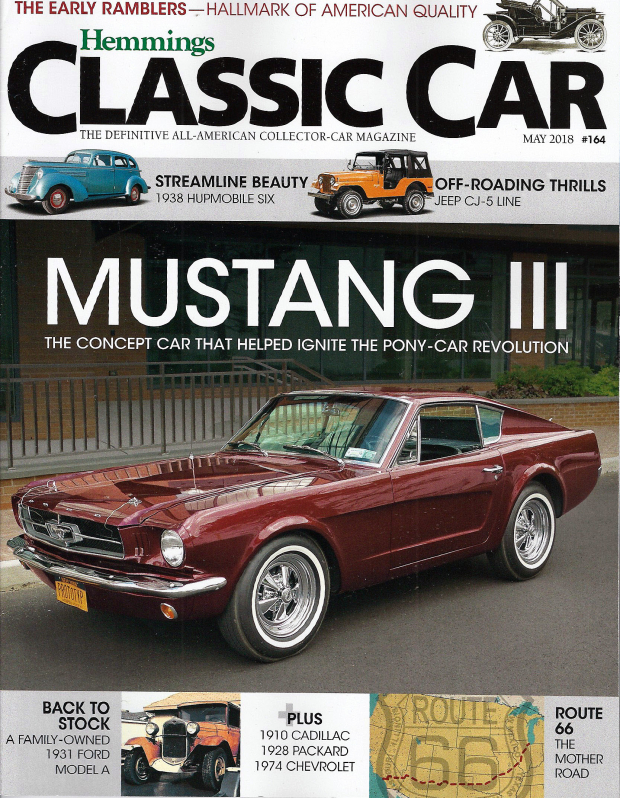
Senior Editor Thomas A. DeMauro with photography by Executive Editor Richard Lentinello has profiled the 1963 Mustang III Concept Show Car in the May 2018 issue of Hemmings Classic Car.
Enjoy,
Howard Kroplick
Mustang III - 1963 Ford Mustang Concept Car from Hemmings Classic Car
May, 2018 - Thomas A. DeMauro
Ford's Mustang is a great-American success story. The right four-seat sporty personal car to attract young buyers in a newly expanding market segment, it was stylish and affordable, and it could be equipped for performance or economy.
Part of the Mustang's development was to explore diverse ideas—one being a two-seat version. Though the mid-engine Mustang I concept car was so equipped, it was also vastly different in build intent, design, and engineering from the production models. Ford had contemplated the viability of a two-seat production car as well, but the Mustang III was styled and completed outside its hallowed halls.
According to Mustang historian Bob Fria's research, Ford built 15 currently known pilot Mustangs at the Allen Park Pilot plant in the second half of the 1963 calendar year—VIN code "5" for 1965 and "S" for the plant. In the summer of 1964, serial number 9, a convertible, was transformed into a two-seat fastback by Andy Hotton's Dearborn Steel Tubing (DST), a company that Ford famously and often partnered with for special projects that also included building the four-seat Mustang II concept car. Once completed, the Mustang III made the rounds with Ford's Custom Car Caravan, being displayed at various venues. Then, in early May of 1965, it mysteriously vanished from DST's shop. Before we delve into those details, let's first review how the Mustang III was created.
To design it, DST tapped the talents of Vincent Gardner, a designer who had made his bones by winning second place at a Fisher Body Craftsman Guild competition while still in high school, and then working for the likes of Auburn, Budd, Studebaker, and others. His Gardner Special personal project, derived from a 1947 Studebaker, gained national acclaim.
In the early 1950s, Gardner was pursuing various endeavors. He impressed Ford when, with his two-seat "Vega" concept, he won a design contest sponsored by the automaker and Motor Trend magazine. Among many other accolades, he also worked with Ford and DST on additional projects.
Though Gardner is generally regarded as a highly skilled hands-on designer, he was not without his eccentricities. He had a reputation for being outspoken and sometimes not playing well with others. Nevertheless, the breadth of the projects he completed with DST and Ford indicated that both companies had confidence in his abilities.
To facilitate the transformation of the Mustang convertible into a two-seat, fastback coupe, the 108-inch wheelbase was shortened 18 inches and the body by about 22.5 inches. Though the front end retained its Mustang identity, the fenders, doors, roof, and back of the vehicle were recreated in fiberglass by DST and Gardner from his designs.
A dramatic fastback roofline with an expansive backlite, large concave sail panels and quarter windows, and a molded-in rear spoiler enhanced the profile. The wheel wells were revised to fit larger tires, the body-side coves were reshaped and ended in the doors now instead of the rear quarters like the four-seat Mustang, the stock fuel tank was relocated, and a quick-release fuel cap was added to the non-opening rear deck area. The stock Mustang bumper and taillamps were integrated into the rear design, and the body was painted a dark candy apple red. The vent windows were stamped "Prototype Solid Safety Glass Car Lite," and plexiglass was used for the side and quarter windows and backlite.
Though the VIN indicates a 260-cubic-inch, two-barrel V-8, the engine bay was fitted with a small-block displacing 302 cubic inches, years before a 302 debuted in the Mustang. DST added the 3 x 2 induction system and engine dress-up items, and modified the automatic transmission. A custom exhaust system was also installed.
The body building process was covered in the April 1965 issue of Custom Craft magazine, and the Mustang III was shown in event coverage in the May 1965 Motor Trend, where it was stated that it would become a production car.
After whatever duties they were built for concluded, the pilot Mustangs including the Mustang III were supposed to be crushed. Coincidentally, on May 2, 1965, the Mustang III disappeared from DST's Inkster, Michigan, shop.
In a letter from DST to Aetna Life and Casualty Company, "Job #X438274 'Shortie' Experimental Mustang," is described thusly: "This car was built at the request of the Ford Motor Company Car Marketing Division in June of 1964. After completion the car was used by Ford Motor Company for showing in its Custom Car Caravan, which travels all over the country. This car was hand built and owned by Dearborn Steel Tubing Company."
DST's letter placed a value of $16,979.02 on its labor and materials for the wheelbase reduction, body fabrication, installation of the engine and transmission, and interior work, but didn't provide a value for the whole car. Yet, a copy of a check from Aetna to DST reveals a $10,000 payout to cover the loss of the Mustang III.
Seven months after the theft, acting on a tip, investigators from the Detroit Police Auto Recovery Bureau and the National Automobile Theft Bureau discovered the stolen Mustang III walled off in a loft over a metal shop. The owner of the building explained that Vincent Gardner had rented the space and had told him it was to keep a concept car Gardner was working on under wraps until it was completed. He provided the building owner with the first month's rent of $50, but failed to pay the rent after that.
Fortunately, the Mustang III was retrieved. Aetna took possession and it was later bought by a company executive. It appears that Gardner was never charged.
In December of 1968, the Mustang III was advertised in Hemmings Motor News, and Bill Snyder of Ohio bought it as soon as he saw it. He had been enamored with the two-seater since he'd read the Motor Trend article years before and attended Ford's event in Cleveland to see the car in person. When he spoke to a Ford representative about buying one back then, he was told that it was not going to become a production model, and the one he saw would likely be crushed. Imagine his surprise to find it later advertised in Hemmings.
Bill enjoyed the Mustang III on the road, and then decided to store it while preparing to restore it. Decades later, it was still in storage, but, with prompting from Bill Warner, chairman of the Amelia Island Concours d'Elegance, Snyder became motivated to have it restored in time to be featured at the 2013 concours.
Capaldi Enterprises, in Willoughby, Ohio, performed the concours-quality restoration from 2011 to 2013. Owner Jim Capaldi told Hemmings Classic Car that the Mustang III had dark-gray primer over the paint when it arrived, the backlite was out of it, there were scratches in the plexiglass quarter windows, and there was typical surface rust on the undercarriage, but the car was complete.
It was then torn down for restoration. During the engine rebuild, it was noted that the block, crankshaft, rods, camshaft, and more components were stamped or cast with Ford "XE" (and other) prefix alpha-numeric codes, which are used on pre-production and/or parts in development. It was also realized that the cylinder heads were marked "289" and the pistons had a 327 Chevrolet part number. The engine parts and the cylinder walls were cleaned up, but the block was not over-bored. A valve job was performed, and new rings, bearings, and gaskets were employed for reassembly.
The early transmission mods were noted during its overhaul, and the 8-inch open rear-end was also rebuilt. The suspension was restored, and the trimmed-down front springs and rear lowering blocks reinstalled. A modern tri-coat paint system was employed in a color chosen by Bill's wife, Christine, that closely matches the 1960s custom hue.
The cost of replacing the scratched quarter plexiglass was prohibitive, so they were extensively polished, but the backlite was replaced. Jim reports that except for the carpet, the interior remains mostly original.
In 2015, Bill (who passed away in 2017) and Christine decided to auction their piece of Mustang history at Auctions America in Fort Lauderdale, Florida. The winning bid came from Howard and Roz Kroplick of Long Island, New York. If that surname rings familiar, it's because the Kroplick's Tucker no. 1044 just graced the cover of the March 2018 issue of HCC. Following decades of success in the business world, Howard authored the books Vanderbilt Cup Races of Long Island and North Hempstead, and coauthored The Long Island Motor Parkway. He has a website www.vanderbiltcupraces.com where he's blogged extensively about the racing history on Long Island and his car collection, and he's the town historian for North Hempstead on Long Island.
Having purchased a 1966 Mustang as his first car, Howard relates, "On the road, the Mustang III draws a lot of attention, because people are always trying to figure out what it is. Sometimes, they get a little too close."
"Powered by the first 302 engine ever placed in a Mustang, it's very fast. It's similar to driving my 1966 Shelby GT350H, but it's louder, and its smaller size gives the perception that you are going at least 20 miles per hour faster than shown on the speedometer. Visibility to the rear is quite good, even though the plexiglass isn't as clear as regular glass. Every time I drive the Mustang III, which is several times a month from the spring to the fall, it's a real adrenaline rush. However, its historic significance, the absence of outside rearview mirrors, and the lack of power steering makes every ride a little nerve-racking."
As is often true with one-off concept show cars, details of their histories are mined from vintage documents, published contemporary articles, the recollections of those who were close to the project, and various other sources. New information can come to light at any time that adds insights to the vehicle's story, confirms aspects that may have already been believed, or possibly even debunks a few long-held conclusions. That said, despite the treasure trove of information he's already amassed, Howard is the first to say that documenting the Mustang III's history remains a work in progress, but that's all part of the rewarding experiences that come with owning a one-of-one show car.
Owner's view
The Mustang III is unique and historic in many ways. According to the research of Bob Fria, of the 15 known pilot Mustangs built, it's one of three known to have survived today. The Mustang III is the only one of them to retain its "S" plant code VIN, as the other two were shipped to Dearborn and had new serial numbers assigned with the "F" plant code. It's also the oldest-known Mustang in the world still on the road today. It will be participating in the AACA Museum exhibit Mustangs: Six Generations of America's Favorite Pony Car from May 18 to October 14, 2018, in Hershey, Pennsylvania. —Howard Kroplick
This article originally appeared in the May, 2018 issue of Hemmings Classic Car.
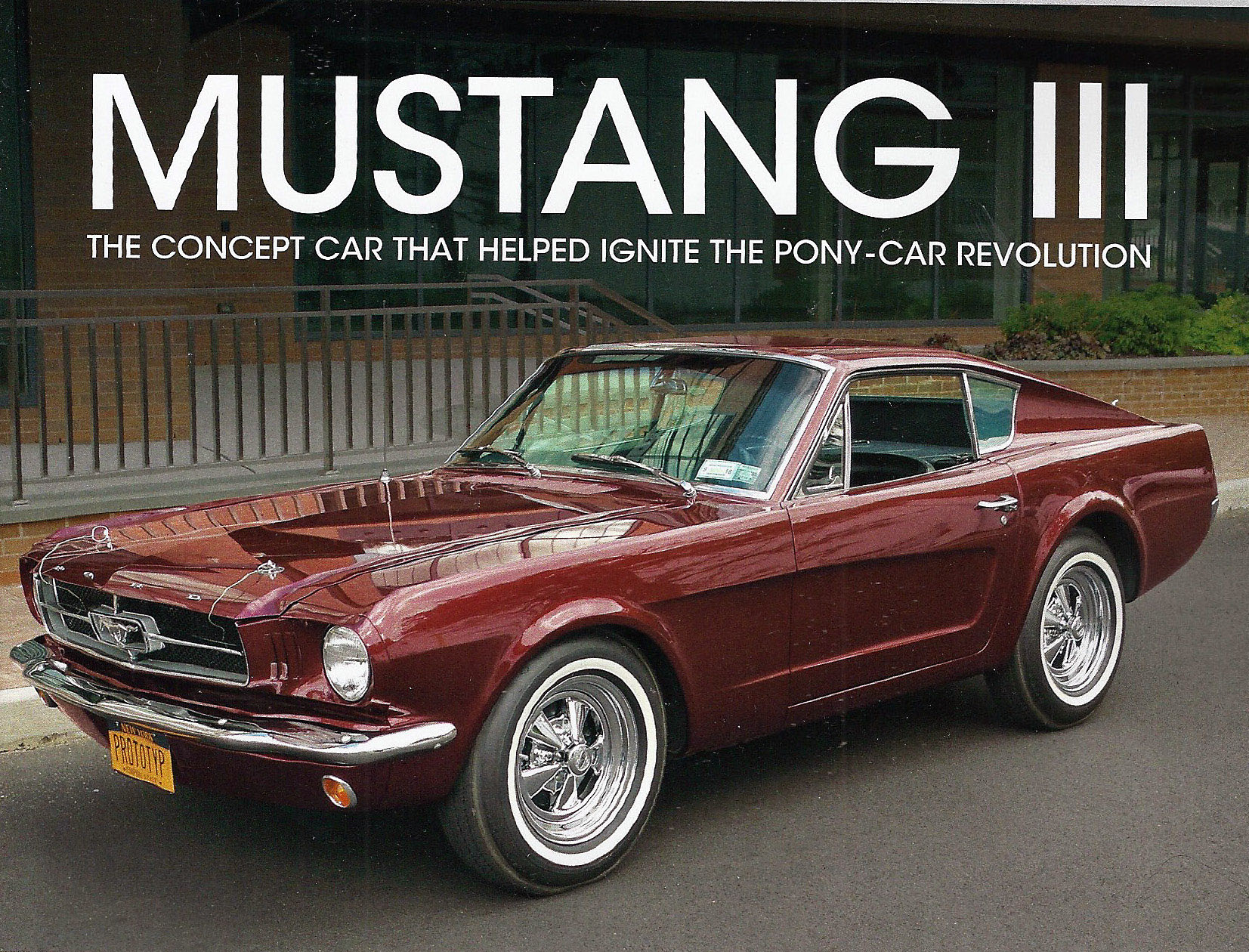
Mustang III
The Concept Car That Helped Ignite the Pony-Car Revolution
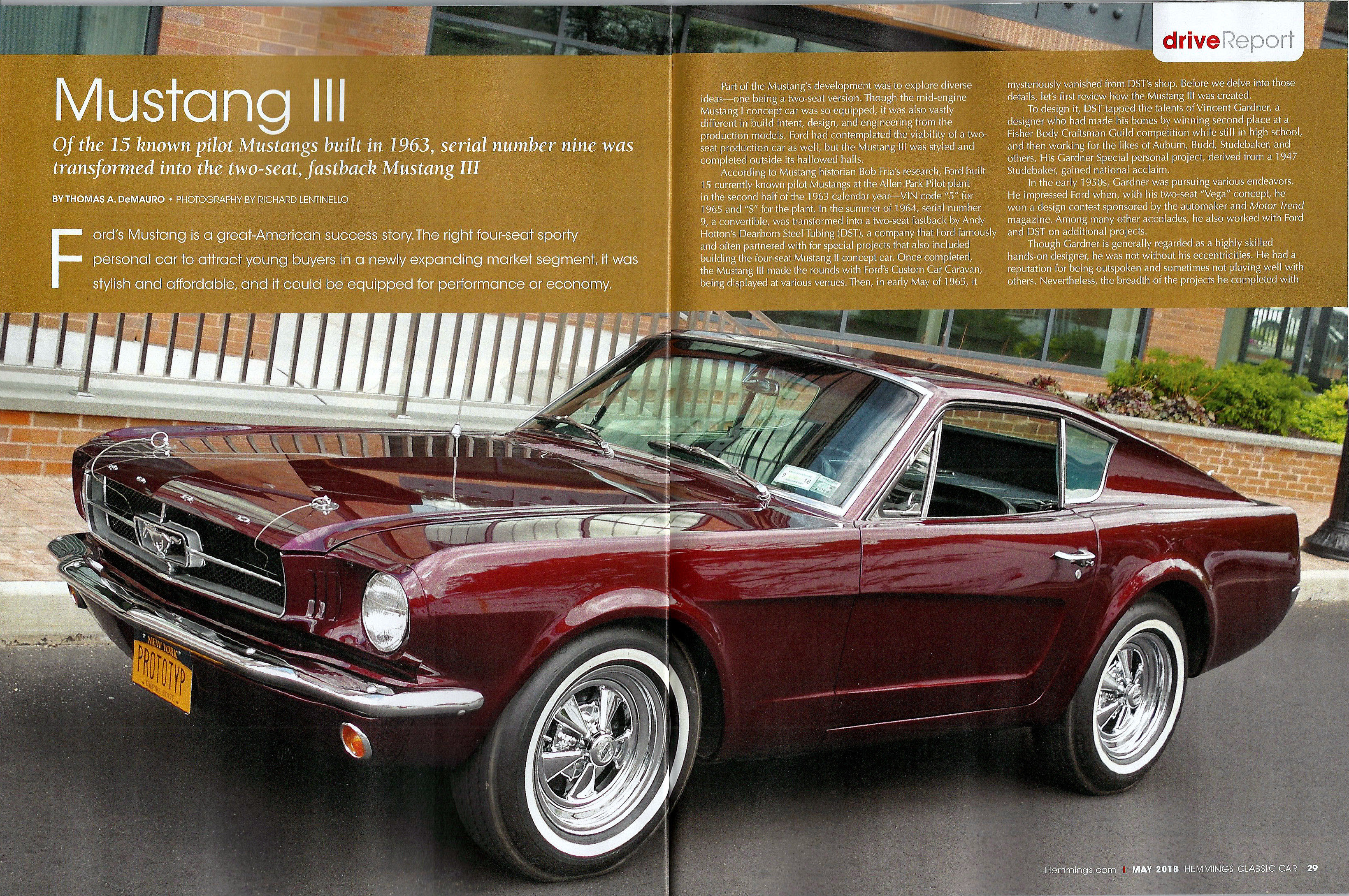
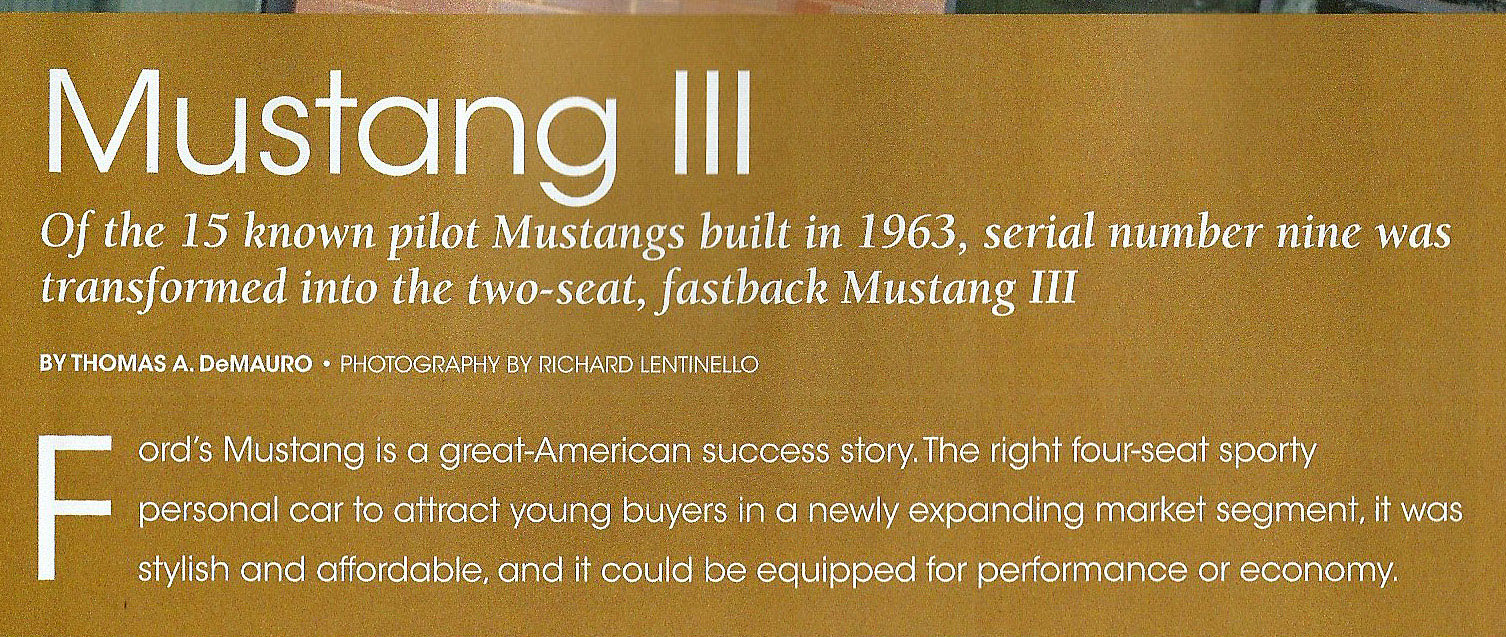
Mustang III
Of the 15 known pilot Mustangs built in 1963, serial nine was transformed into the two-seat, fastback Mustang III.
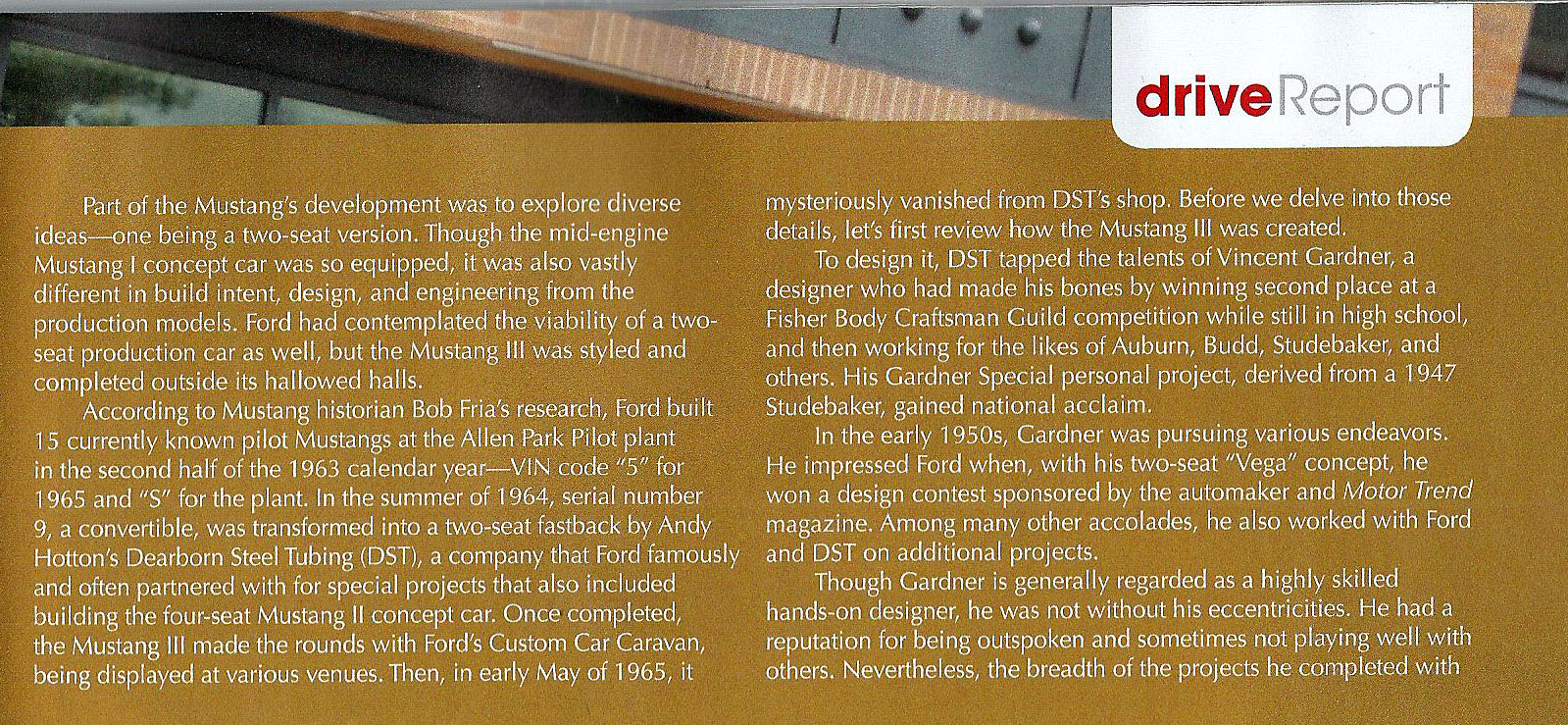
"According to Mustang historian Bob Fria's research, Ford built 15 currently known pilot Mustangs at the Allen Park Pilot Plant in the second half of the 1963 calendar year...In the summer of 1964, serial number 9, a convertible, was transformed into a two-seat fastback by Andy Holton's Dearborn Steel Tubing (DST), a company that Ford famously and often partnered with for special projects including the four-seat Mustang II concept car. Once completed, the Mustang III made the rounds ofwith Ford's Custom Car Caravan, being displayed at various venues."
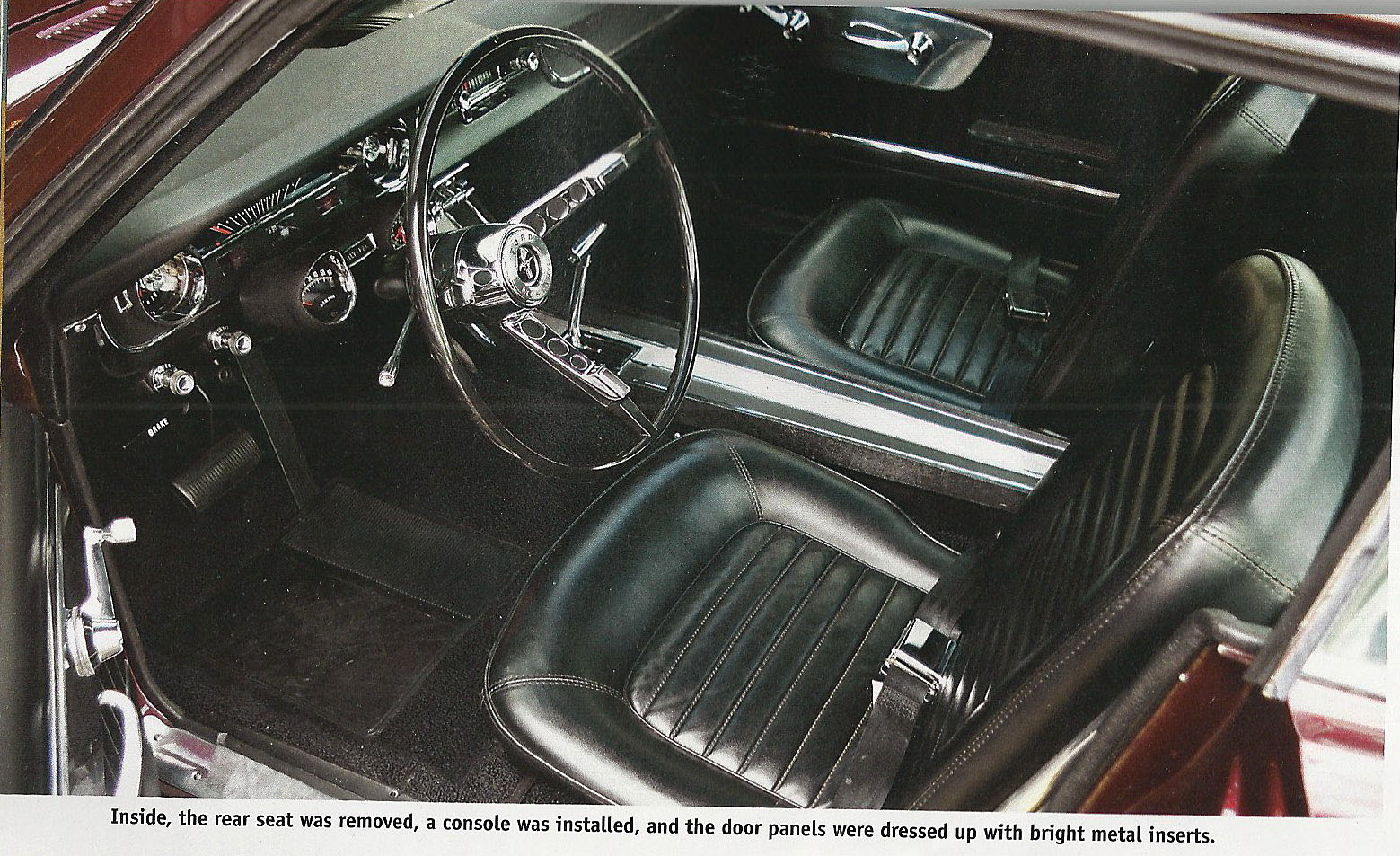
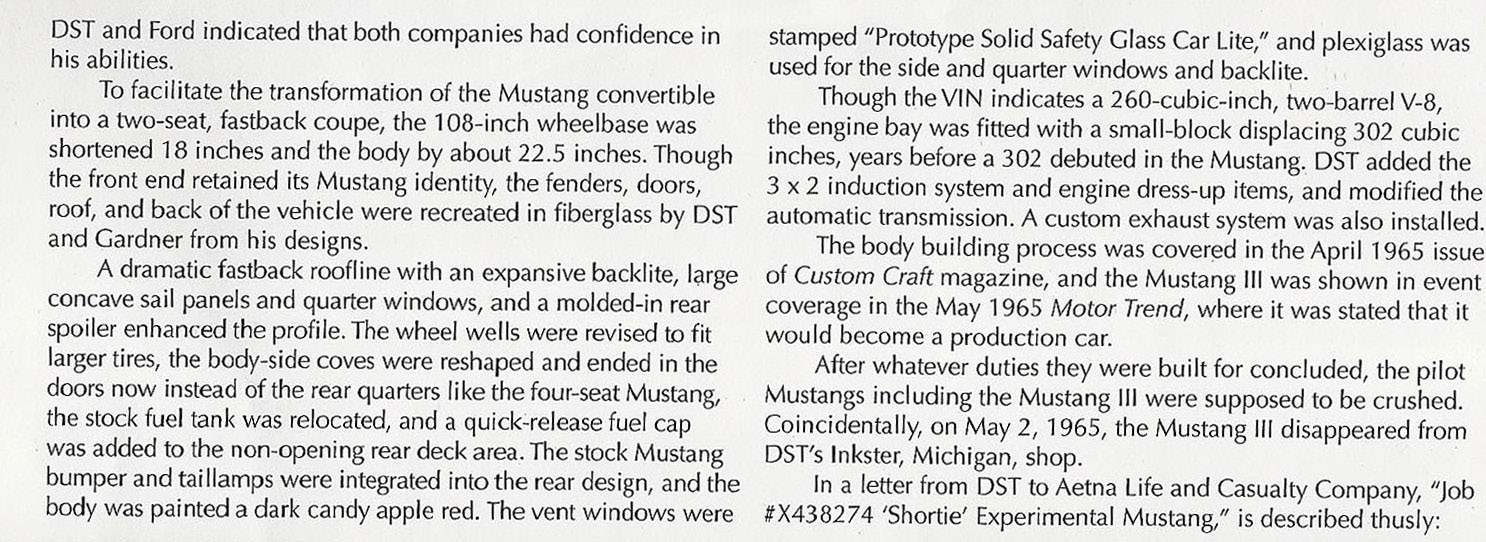
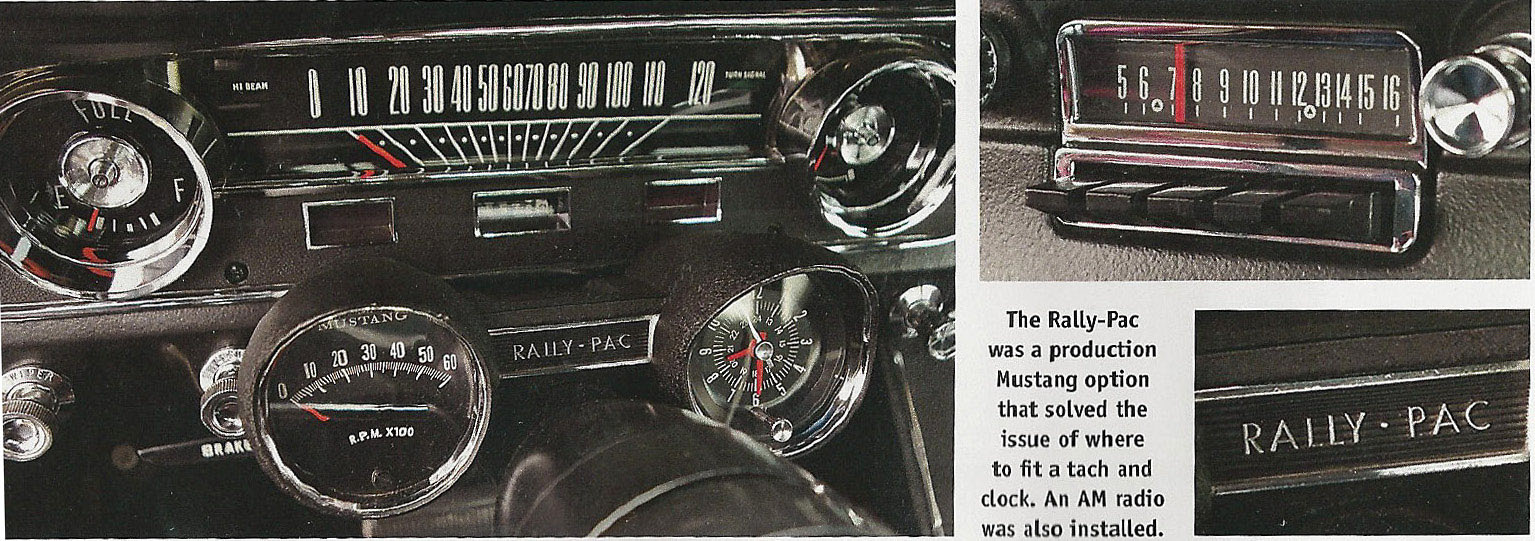
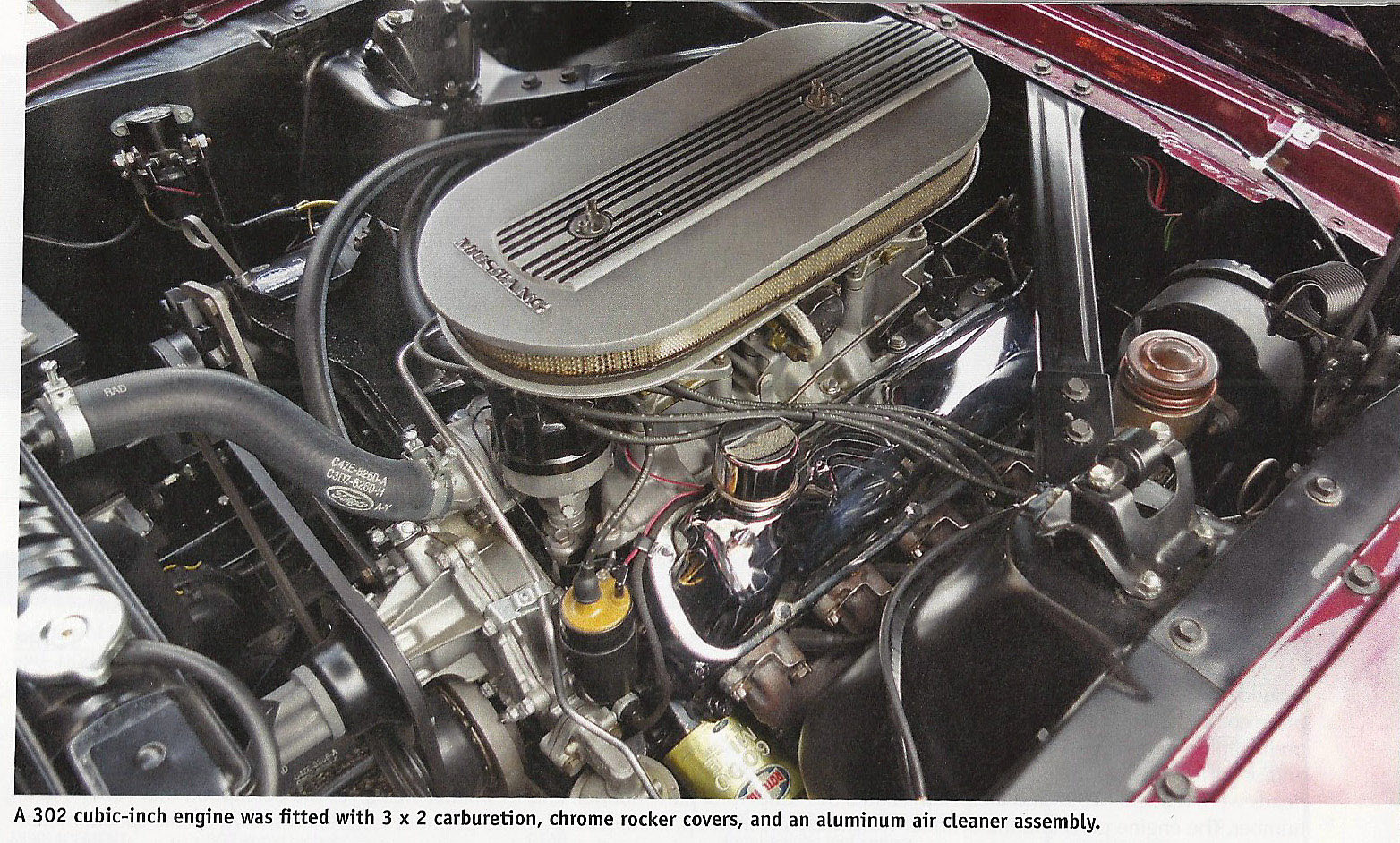
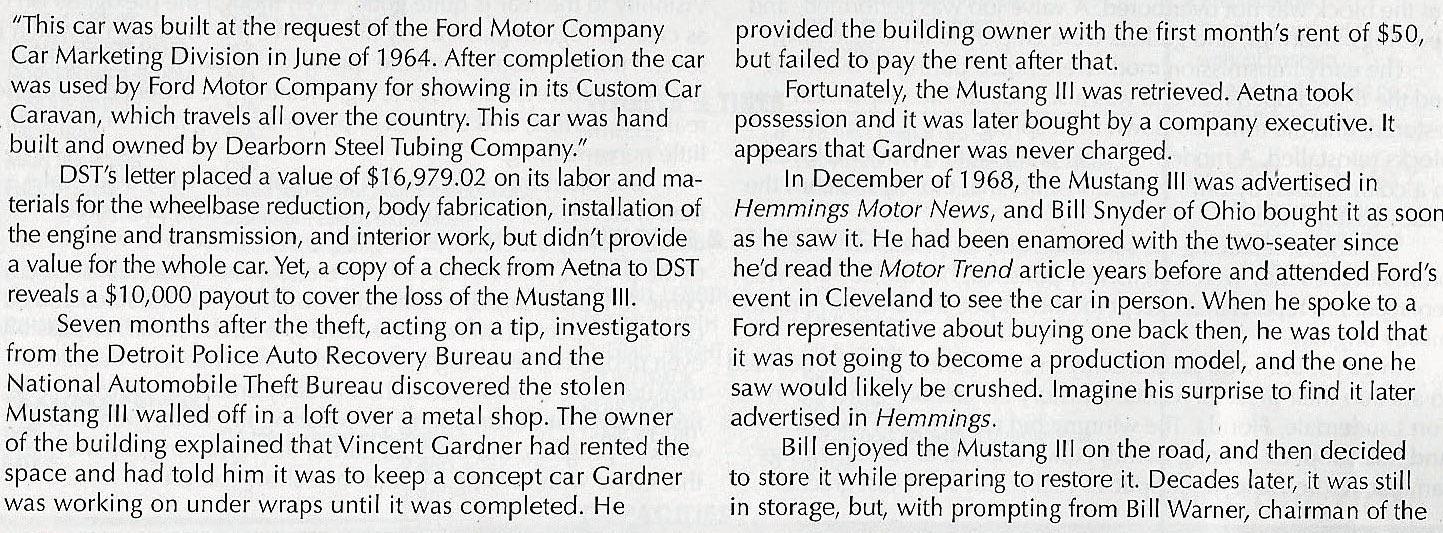
In a letter from DST to Aetna Life and Casualty Company: "This car was built at the request of the Ford Motor Car Marketing Division in June 1964. After completion the car was used by Ford Motor Company for showing in its Custom Car Caravan, which travels all over the country. The car was hand built and owned by Dearborn Steel Tubing."
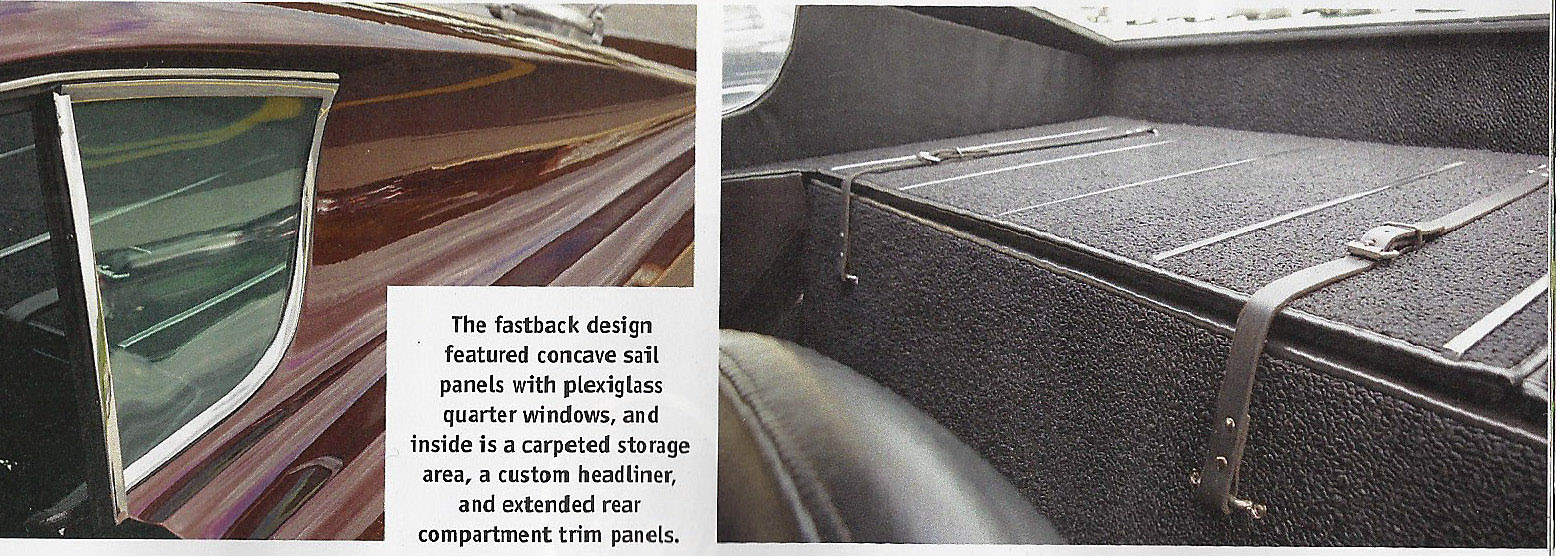

"Owner's View: It's also the oldest known Mustang in the world still on the road today."
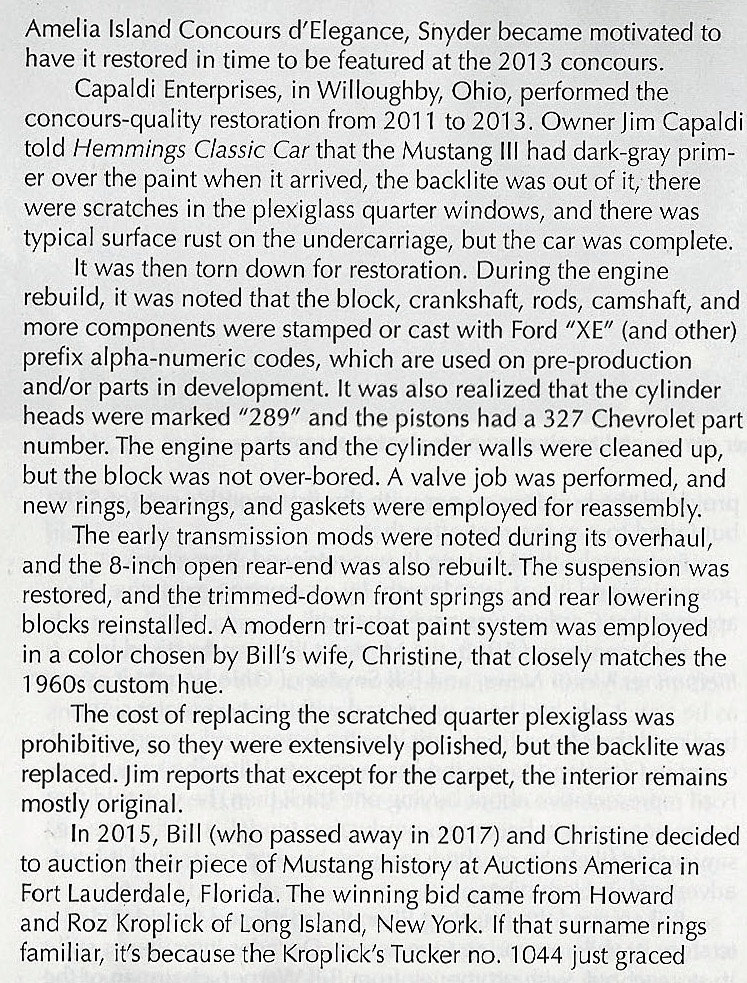
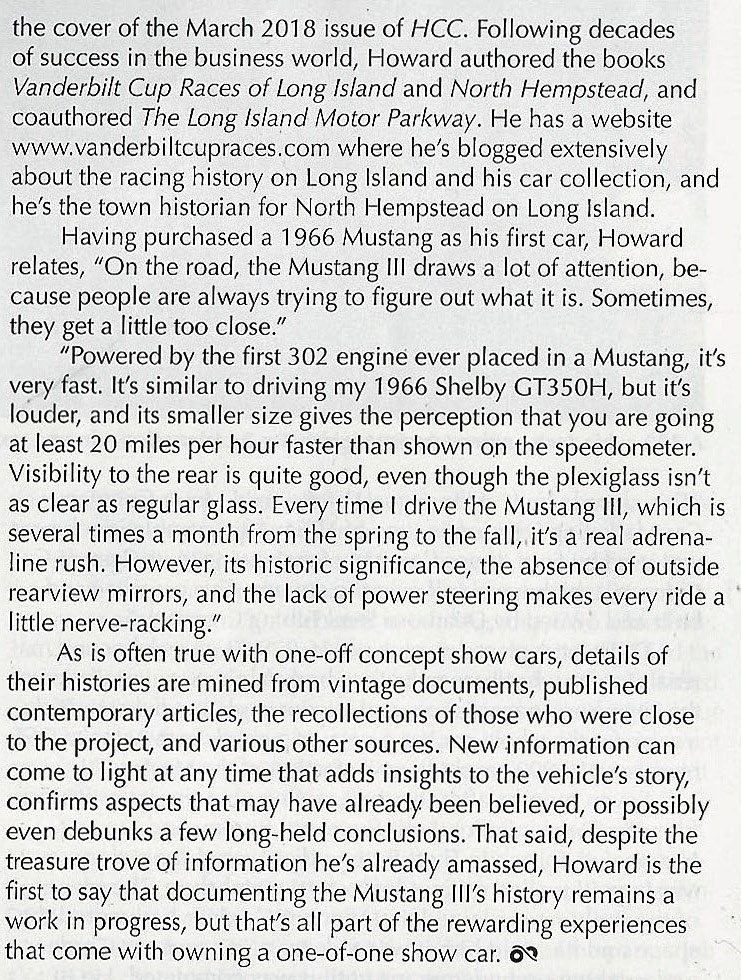
"Powered by the first 302 engine ever placed in a Mustang."
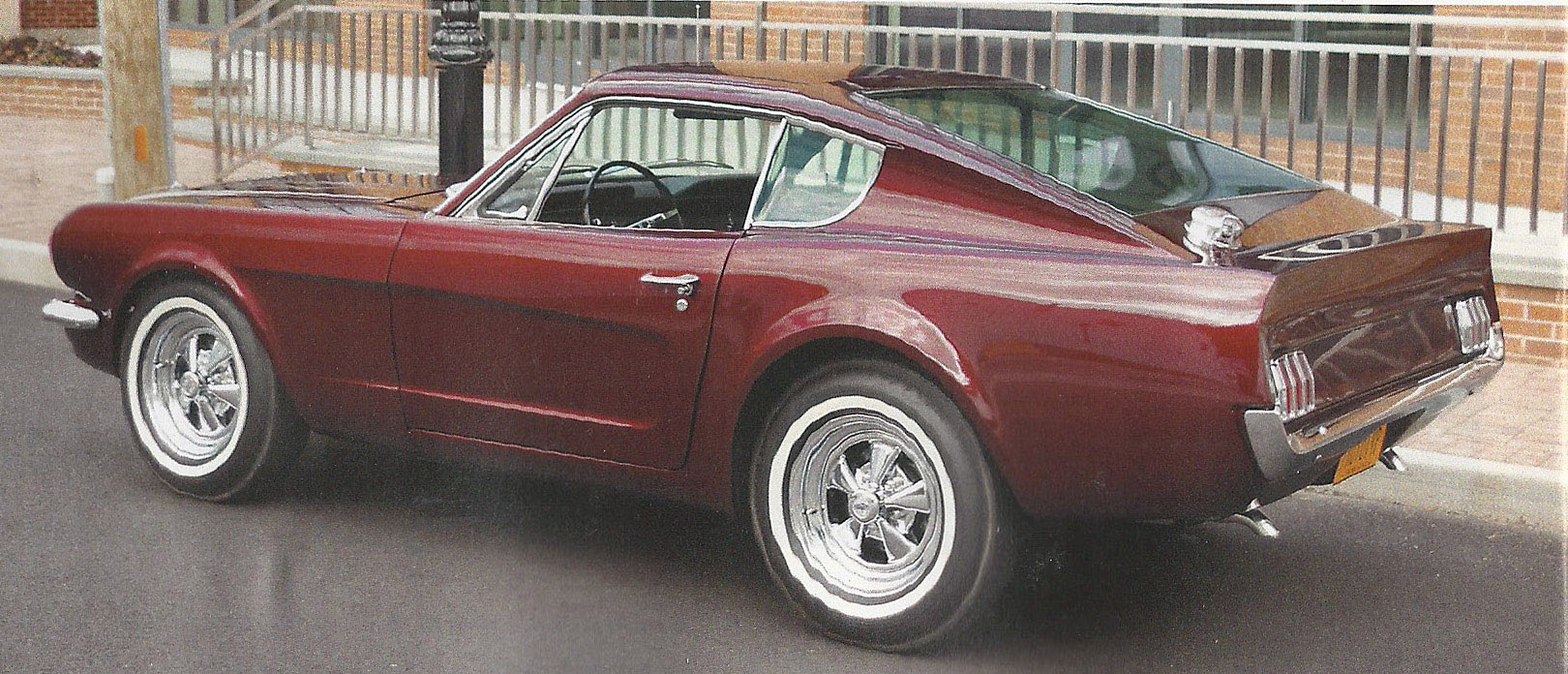
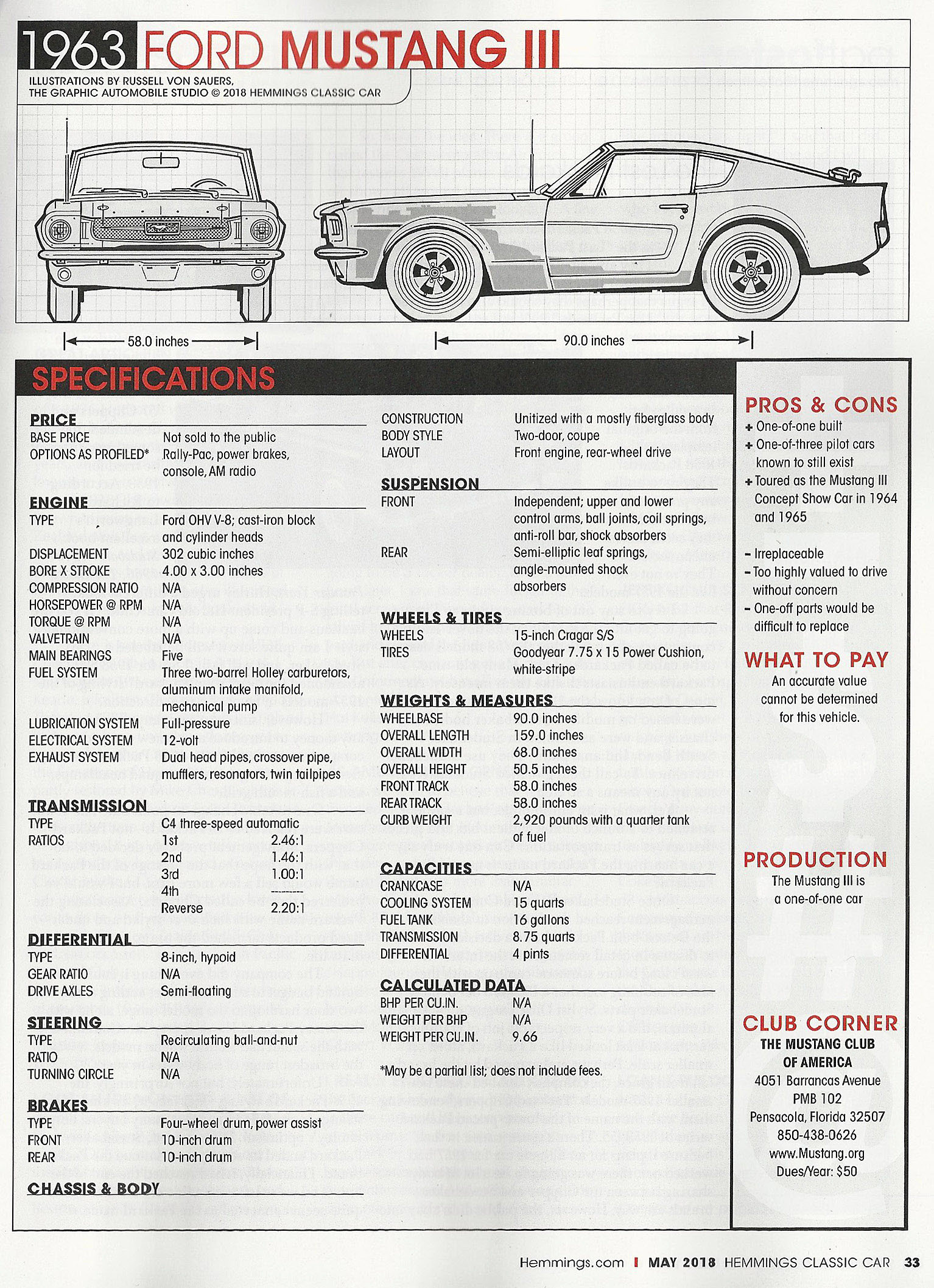

Comments
Hi Howard: When and if you see Tom DeMauro, would you ask him if he was the
owner and operator of a 7/11 in Garden City Park. If so, he would be about in his
late 60’s or early 70’s . He was a member of the Model A Club of Long island when
I resided on Long island.
Thanks and Best !!! Ron
strange that the back side view looks similar to the 240Z datson that debuted in 1971-2.
Howard,
That was a terrific and well deserved article on your beautiful Mustang III.
Nice going.
Rog